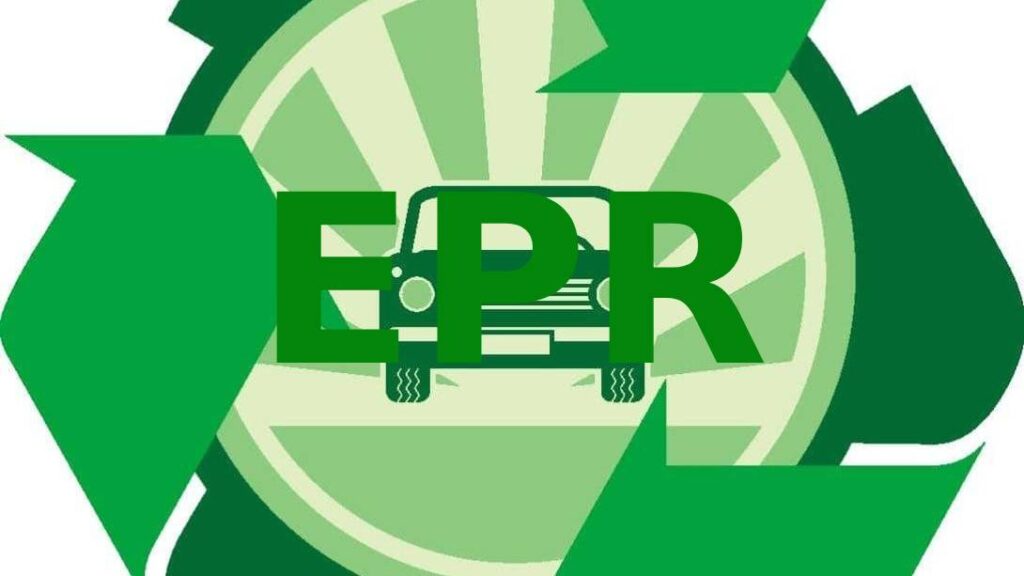Extended Producer Responsibility (EPR) marks a transformative shift for India’s automobile OEMs. It mandates manufacturers to own the entire lifecycle of their vehicles—from design through to post-consumer disposal. As vehicle ownership surges and environmental concerns intensify, EPR has evolved from a regulatory suggestion into an urgent imperative. Indian OEMs can no longer afford to view sustainability as an afterthought. Instead, they must integrate it into the very core of their operations.
This calls for strategic investment in eco-conscious vehicle design, material recovery systems, and robust reverse logistics. Moreover, establishing efficient end-of-life vehicle (ELV) recycling frameworks, incorporating recyclable materials, and building strong alliances with certified recyclers are no longer optional—they are critical steps. These actions not only ensure regulatory compliance but also bolster brand reputation and advance participation in the circular economy.
More importantly, by embracing EPR proactively, Indian automobile manufacturers can redefine themselves as pioneers of sustainable mobility. They gain the dual advantage of transforming waste into economic value and insulating their businesses against tightening environmental regulations. EPR is not merely a responsibility—it is a catalyst for innovation, a driver of competitive edge, and a cornerstone for long-term resilience.
At the Conference on Decoding the EPR – Challenges, Opportunities, and Way Forward, hosted by the PHD Chamber of Commerce and Industry, The Interview World engaged in an exclusive dialogue with Nitin Chitkara, CEO of Meta Materials Circular Markets. In this insightful conversation, Chitkara delves into the practicalities of EPR implementation in the automobile sector, outlines tangible benefits for both OEMs and consumers, and shares industry-best practices for embedding sustainability. He also emphasizes the growing feasibility of traceability within EPR systems—an essential element for accountability and impact.
Here are the most compelling insights from that conversation.
Q: When is the implementation of EPR (Extended Producer Responsibility) scheduled to begin for OEMs in the automobile sector?
A: The implementation of Extended Producer Responsibility (EPR) for the automobile sector will begin in the financial year 2025–26. During the first year—and continuing over the next five years—automobile manufacturers will be required to recover 8% of the steel content from end-of-life vehicles. Specifically, OEMs must collect 8% of the steel from vehicles manufactured between 2005 and 2010, including both private and commercial categories.
This policy marks a significant step toward sustainable mobility. It directly targets old, polluting, and unfit vehicles that continue to occupy roads despite being unsafe and environmentally damaging. EPR will compel manufacturers to establish robust collection systems that reach beyond urban centers—extending deep into rural and semi-urban areas. This shift decentralizes vehicle recovery efforts and ensures that sustainability is not confined to metro cities alone.
Importantly, OEMs already possess a vast network of dealerships across the country. If they commit to leveraging this infrastructure for ELV collection, they can easily connect with vehicle owners and encourage them to retire obsolete vehicles. Instead of letting these vehicles languish, manufacturers can guide consumers toward responsible scrapping—driving both compliance and environmental benefit.
This mandate not only enforces accountability but also opens the door to systemic change. By transforming dealerships into collection hubs, OEMs can create an ecosystem where sustainability and consumer engagement go hand in hand.
Q: What benefits does the implementation of EPR offer to automobile manufacturers and individual consumers?
A: India’s road network remains constrained and limited. When old vehicles occupy roadside space, they exacerbate congestion and pose a serious constraint to urban mobility. Therefore, it becomes imperative to systematically remove these aging vehicles from the ecosystem.
Doing so paves the way for safer, cleaner, and more efficient vehicles to take their place. New-generation automobiles are not only more secure and technologically advanced but also far more environmentally responsible. This shift significantly reduces the overall environmental footprint.
For OEMs, the transition brings an added advantage. They are rapidly developing cutting-edge technologies and now have the opportunity to promote modern vehicles by phasing out obsolete ones. Encouragingly, OEMs offer attractive incentives for consumers to replace their old vehicles with new models—making the upgrade financially viable.
Ultimately, this transition benefits every stakeholder. OEMs gain from increased demand for advanced vehicles. Consumers enjoy safer, more efficient, and incentivized upgrades. Most importantly, the environment reaps long-term gains from reduced emissions and improved fuel efficiency.
In short, this is a win-win proposition—for manufacturers, for individuals, and for the planet.
Q: What best practices would you recommend for promoting sustainability and compliance in the automobile sector?
A: Scrapping facilities are now rapidly opening across India, marking a significant shift in how end-of-life vehicles are handled. Over 90 such facilities are currently operational, covering nearly every state—barring just a few exceptions. This nationwide expansion reflects a growing commitment to sustainable vehicle disposal.
Importantly, these facilities operate under strict compliance guidelines issued by the Ministry of Road Transport and Highways (MoRTH) and the Central Pollution Control Board (CPCB). They dismantle vehicles in a professional, environmentally responsible manner—a sharp departure from past practices.
Before 2021, India lacked formal scrapping infrastructure. The process was dominated by unregulated players who paid little attention to environmental norms. Hazardous waste, including engine oil and other fluids, was often dumped carelessly, causing severe ecological damage.
Today, the Registered Vehicle Scrapping Facilities (RVSFs) represent a welcome change. However, to ensure long-term success and transparency, they must go a step further. Maintaining traceability of dismantled materials—tracking where each component or scrap is supplied—is essential. This not only enhances accountability but also strengthens the circular economy.
In essence, India’s vehicle scrapping ecosystem is evolving in the right direction. What began as an informal, environmentally harmful practice is now becoming a structured, sustainable industry.
Q: Traceability is crucial in EPR. Given vehicle registration systems, how feasible is its implementation in the automobile sector?
A: One of the biggest advantages in India’s vehicle scrapping ecosystem is the robust VAHAN database. It holds detailed records of vehicles spanning nearly 30 years. Every vehicle can be uniquely identified through its registration number, engine number, chassis number, or registered address. This allows traceability to begin right at the source.
From the moment a vehicle enters the scrapping process, we can pinpoint its origin and ownership. Moreover, OEMs maintain comprehensive data on the materials used during manufacturing. This level of insight enables precise tracking of a vehicle’s composition, making traceability not only feasible but highly efficient.
In contrast, such transparency is rarely possible in the plastic or e-waste sectors, where materials lack structured documentation. That’s what sets the vehicle ecosystem apart.
However, once the dismantling process begins and materials are disintegrated, the challenge shifts. It becomes crucial to trace how these materials move from scrapping facilities to downstream recycling units. This calls for a robust material tracking system—one that ensures end-to-end visibility and accountability throughout the recycling chain.
In short, India has a solid foundation for traceability in vehicle scrapping. The next step is to build a seamless system that tracks material flow beyond dismantling, reinforcing the integrity of the circular economy.









